

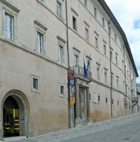
The presence of the arms of the Breccia and Vigilanti families in the Sala delle Feste (ballroom - see below) on the piano nobile of this palace suggests that it was built by the Breccia-Vigilanti family. It was probably commissioned by Monaldo Vigilanti.
The palace subsequently passed to the Giacobetti family, whose arms are on the facade. Paolo Giacobetti commissioned Giacomo Giorgetti to extend the palace in 1648-55. This involved the incorporation of adjacent properties into the original palace, which presumably took on its current appearance at this time. Queen Christina of Sweden stayed here in 1655, on her way to Rome.
The palace stayed in the Giacobetti family until 1715, when Ruggiero Giacobetti died. Cardinal Giuseppe Vallemani di Fabriano inherited it, and owned it until his death in 1725. It passed to the Commune of Assisi at an unknown date:
-
✴The Pinacoteca Comunale re-opened on the first floor of Palazzo Vallemani in 2007.
-
✴The Biblioteca Comunale di Assisi, which was until recently housed on the first floor, is at present located Palazzo del Capitano del Popolo (at 2010), but will return to Palazzo Valleman when its restoration is complete.
Unfortunately, the rooms containing frescoes that are described below, which are on the piano nobile, to the left as you climb the stairs, are not part of the public area, but it is sometimes possible to see them by asking at the ticket office. They are also occasionally used for exhibitions.
Sala delle Feste
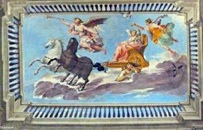
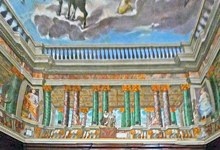

The frescoes of the Sala delle Feste, like those in the vaults of the chapel of the Breccia-Vigilanti family (the Cappella della Deposizione) in Santa Maria degli Angeli, are attributed to Ventura Salimbeni. He was documented in Perugia in 1602, and his work in Assisi also probably dates to around this time.
This room is also known as the Sala degli Sposi, in reference to the couple frescoed on the fictive balcony. The original portraits of this couple (presumably the original owners from the Breccia and Vigilanti families) have been painted over, probably to depict the later owners, Count Paolo Giacobetti and Settimia della Genga.
The fresco on the ceiling is an allegory of the triumph of Virtue over Vice.
Sala di San Francesco
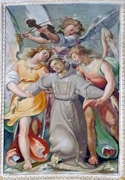
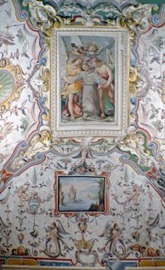

This room is named for the fresco (ca. 1602) at the centre of the ceiling, which depicts St Francis in ecstasy. It is attributed to Antonio Circignani, il Pomarancio.
The landscapes and the surrounding grotesque decoration are attributed to Matteuccio Salvucci.
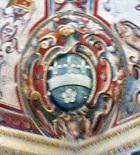
Sala di Giuseppe Ebreo

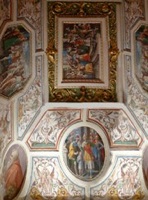
This room is named for the fresco (ca. 1602) on the ceiling, which depicts scenes from the life of Joseph (the Old Testament figure). They too are attributed to Antonio Circignani, il Pomarancio, and are close to his documented frescoes (1600-1) in Palazzo Mattei di Giove, Rome.
Other Rooms
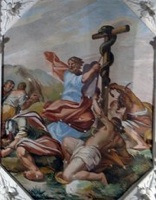
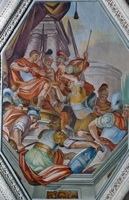

Moses and the crucified serpent Judgement of Solomon Sacrifice at the Tabernacle of David
Other rooms in this part of the palace are named for frescoes (early 17th century) on their ceilings depicting scenes from the lives of Moses, Solomon and David respectively.
Proceed to Other Patrician Palaces of Assisi.
Return to Monuments of Assisi.
Return to Walk III.
Return to the home page on Assisi.

